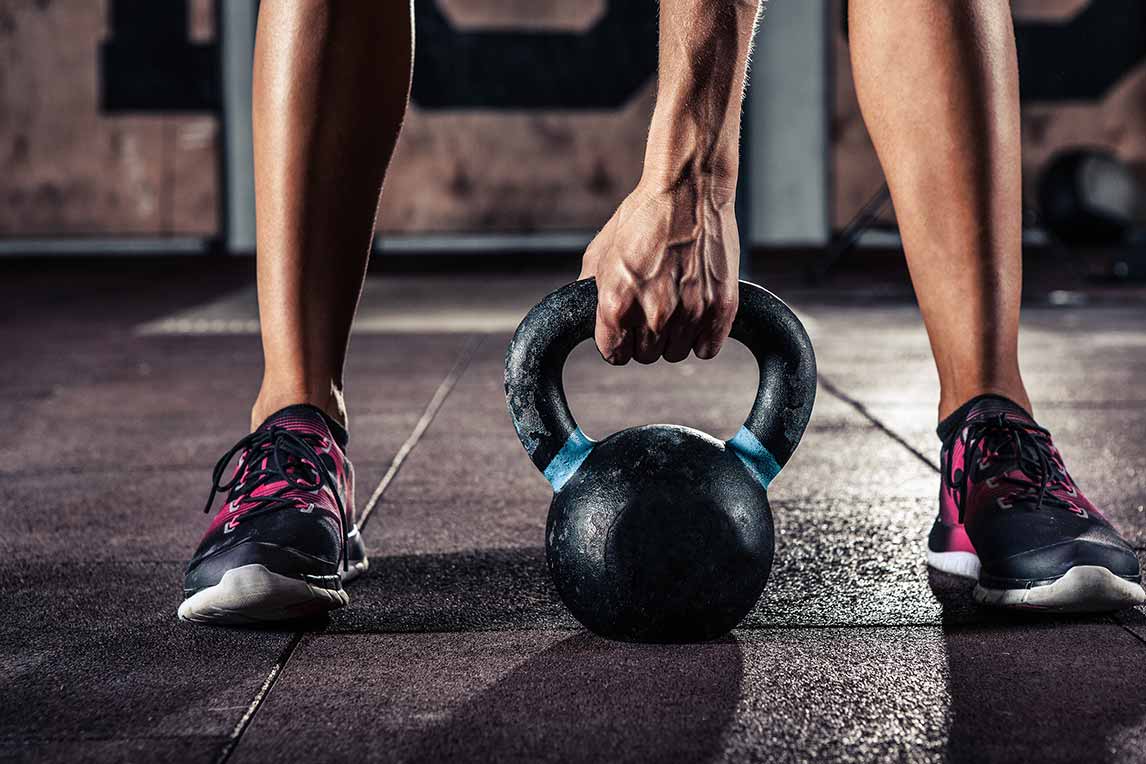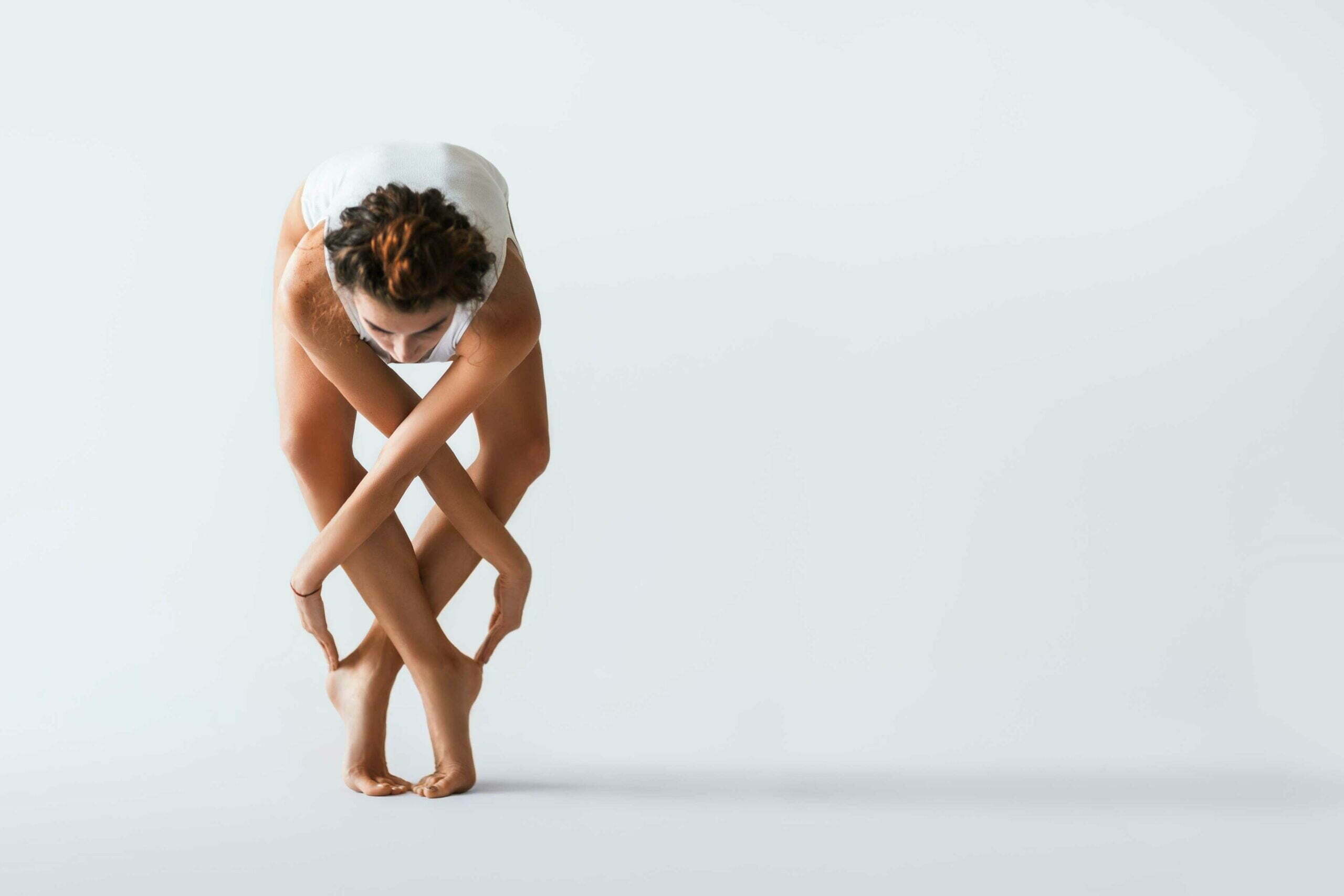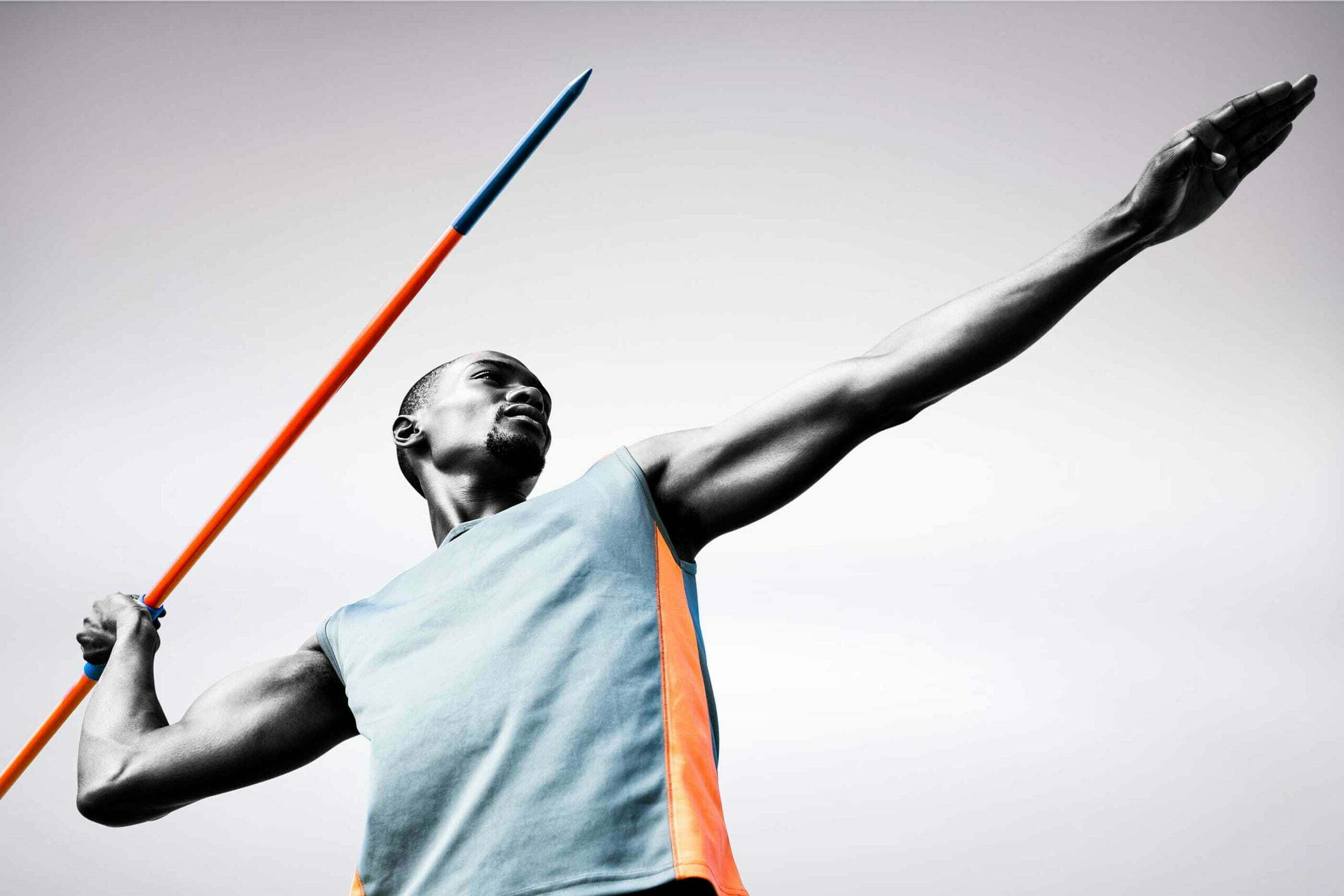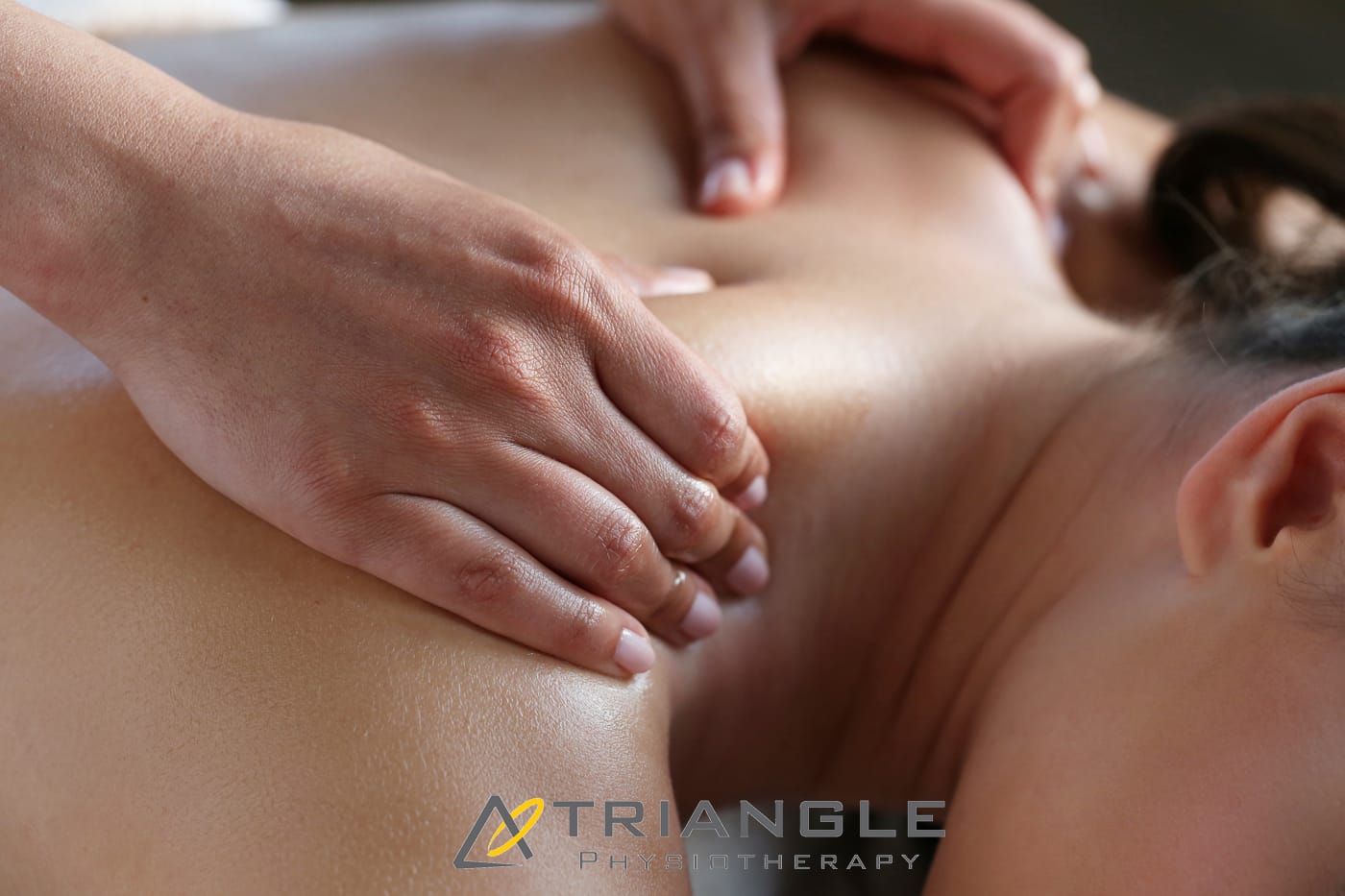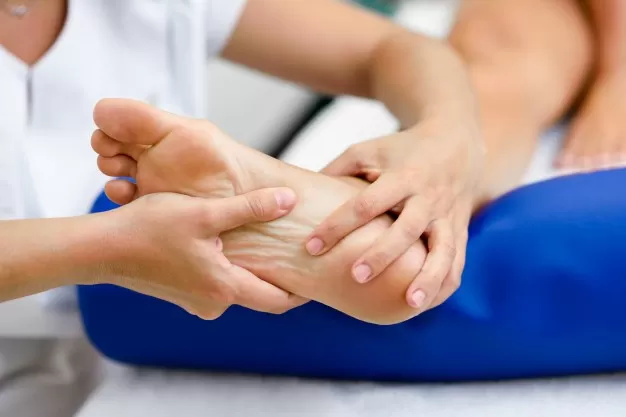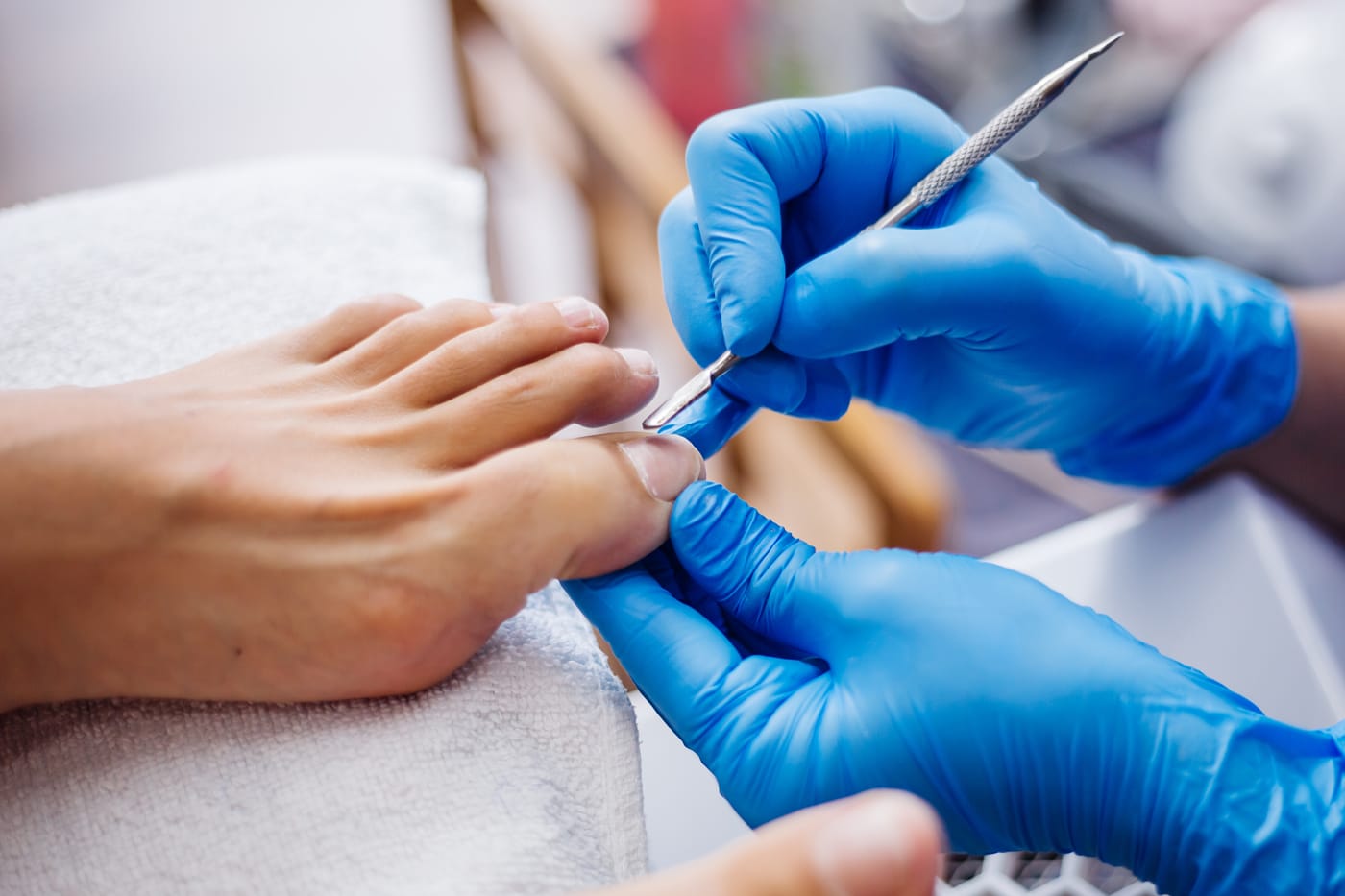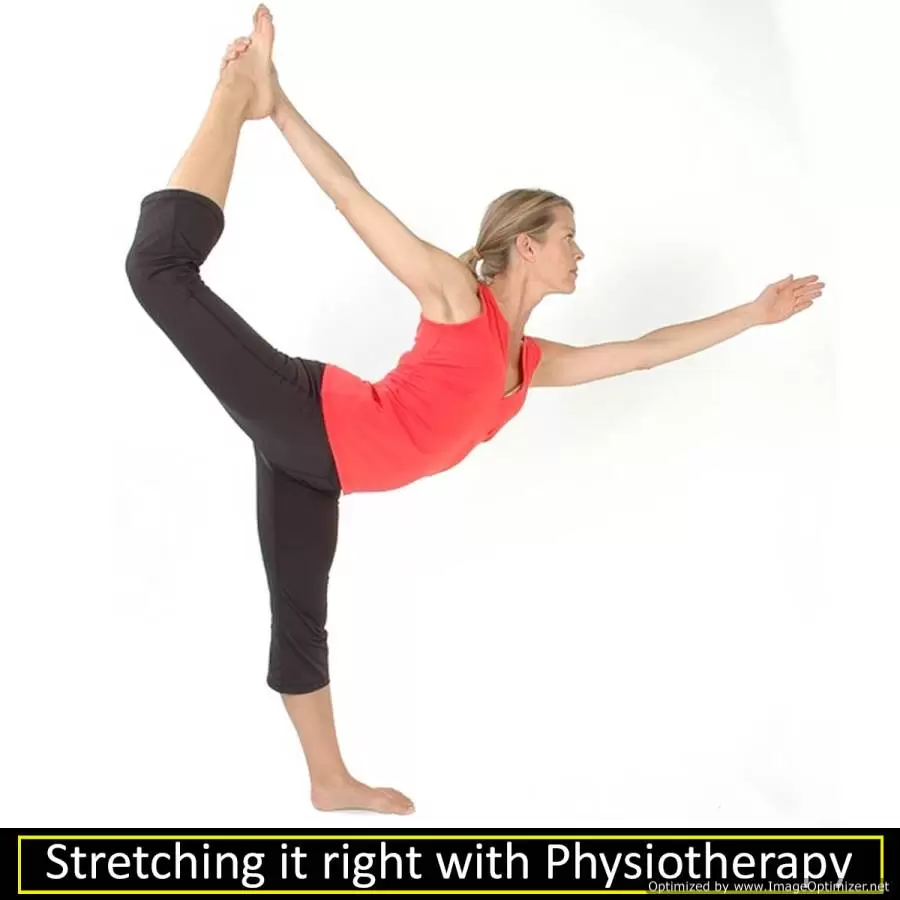Chronic back pain is more than an inconvenience – it can limit your movement, affect your posture, disrupt your sleep, and reduce your quality of life. In a fast-paced city like Toronto, where long commutes, desk jobs, and busy schedules are common, chronic back issues affect people across all age groups.
At Triangle Physiotherapy Toronto, our experienced team offers specialized care for chronic back pain physiotherapy in Toronto, helping clients get to the root of their discomfort and build long-term recovery strategies. Here’s how we approach treatment, timelines, and personalized care pathways.
What Is Chronic Back Pain?
Chronic back pain is pain that persists for 12 weeks or more, even after an initial injury or condition has healed. It may feel like:
- A persistent ache in the lower or middle back
- Sharp, shooting pain during movement or lifting
- Tightness or stiffness after long periods of sitting or rest
- Radiating pain down into the legs or hips
Common causes include herniated discs, poor posture, spinal degeneration, previous injuries, or muscle imbalances. Each individual experiences it differently, which is why a tailored physiotherapy plan is so important.
Our Approach to Chronic Back Pain Physiotherapy in Toronto
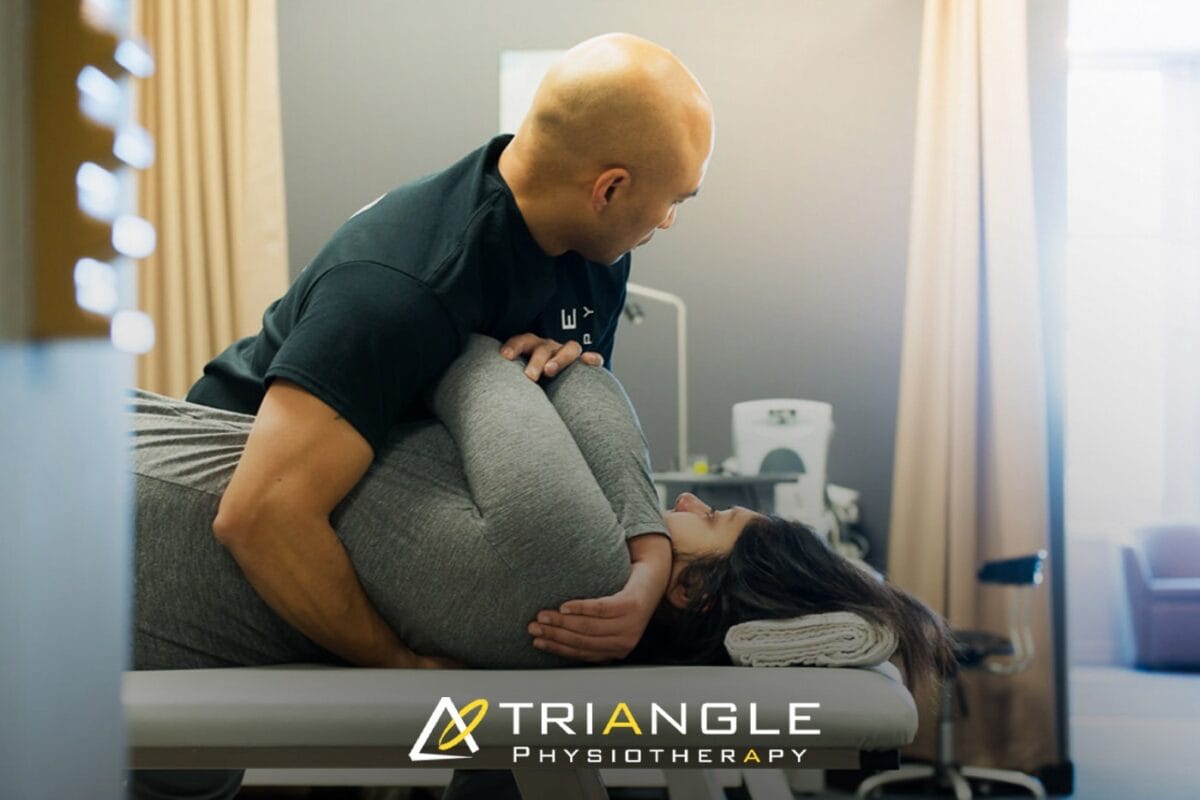
1. In-Depth Assessment
We begin with a thorough assessment at our Toronto clinic. This includes reviewing your medical history, lifestyle factors (like work habits and posture), and physical tests to understand how your back moves and where restrictions or weaknesses lie.
2. Personalized Treatment Plan
Based on our findings, your physiotherapist will develop a custom treatment plan to address your specific type of chronic back pain. This may include:
- Manual therapy and spinal mobilization
- IMS
- Core and back-strengthening exercises
- Postural correction and ergonomic advice
- Pain-relief modalities
- Functional training to improve everyday movement
At Triangle Physiotherapy Toronto, every plan is adjusted to your body, goals, and schedule.
Recovery Timeline: What to Expect
While every case of chronic back pain is unique, here are some general timelines:
- Mild to moderate pain: Noticeable improvements within 4–6 sessions
- Long-term or recurring pain: 8–12+ weeks of consistent therapy, with follow-up care
We track progress closely and modify your treatment plan as needed to ensure steady, meaningful improvement.
Life After Treatment: Long-Term Pain Management
Our focus isn’t just on short-term relief – it’s about long-term results. Once your pain decreases and mobility improves, we help you:
- Build a home-based strength and mobility program
- Adjust workplace and lifestyle habits to reduce strain
- Stay active safely with expert guidance
For continued care, we also offer massage therapy, chiropractic therapy, and fitness support within our Toronto location.
Why Choose Triangle Physiotherapy Toronto?
We combine clinical expertise with a personal approach to care. Our physiotherapists understand the demands of city living and work with you to make recovery achievable and stress-free. Conveniently located and committed to results, Triangle Physiotherapy Toronto is your trusted destination for chronic back pain physiotherapy in Toronto.
The holidays are around the corner, and so is all the pressure and stress that can tag along with them. Holiday stress is hard to avoid between work, family responsibilities, and a schedule packed with social commitments — but it’s easier to manage stress with massage therapy. Massage therapy can help you destress, unwind, and be ready to enjoy the holiday season.
How can massage therapy help with relieving holiday season stress?
Here are some ways in which massage can help alleviate holiday stress:
- Relaxation: Massage is known for its ability to induce relaxation. The physical manipulation of muscles helps release tension and promotes a sense of calm. This can be particularly beneficial during the hectic holiday season when stress levels tend to be higher.
- Reduced Muscle Tension: The physical demands of holiday preparations, such as shopping, cooking, and decorating, can lead to muscle tension and discomfort. Massage can target specific areas of tension, helping to release tight muscles and improve flexibility.
- Improved Sleep: The holiday season can disrupt regular sleep patterns due to increased activities and stress. Massage has been shown to improve sleep quality by promoting relaxation and reducing anxiety. Better sleep can contribute to overall well-being.
- Stress Reduction: Massage therapy has been linked to a reduction in stress hormones such as cortisol. Regular massage sessions can help regulate stress levels and promote a sense of well-being.
- Enhanced Mood: Massage stimulates the release of endorphins, the body’s natural feel-good chemicals. This can help improve mood and reduce feelings of anxiety or depression, which can be exacerbated during the holiday season.
- Increased Body Awareness: Massage encourages mindfulness and awareness of the body. Focusing on the present moment can help individuals let go of worries about the past or future, promoting a sense of peace and tranquility.
- Improved Circulation: The physical manipulation of muscles during massage promotes better blood circulation. Improved circulation can help reduce inflammation, support the immune system, and contribute to overall health.
- Time for Self-Care: The holiday season often involves taking care of others, which can leave little time for self-care. Scheduling a massage provides dedicated time for self-nurturing, allowing individuals to prioritize their well-being.
- Human Connection: Massage therapy involves human touch, which can have a positive impact on emotional well-being. The connection with a massage therapist can provide a sense of comfort and support.
- Mind-Body Connection: Massage emphasizes the interconnectedness of the mind and body. Taking the time for a massage can help individuals reconnect with their bodies, fostering a holistic approach to health.
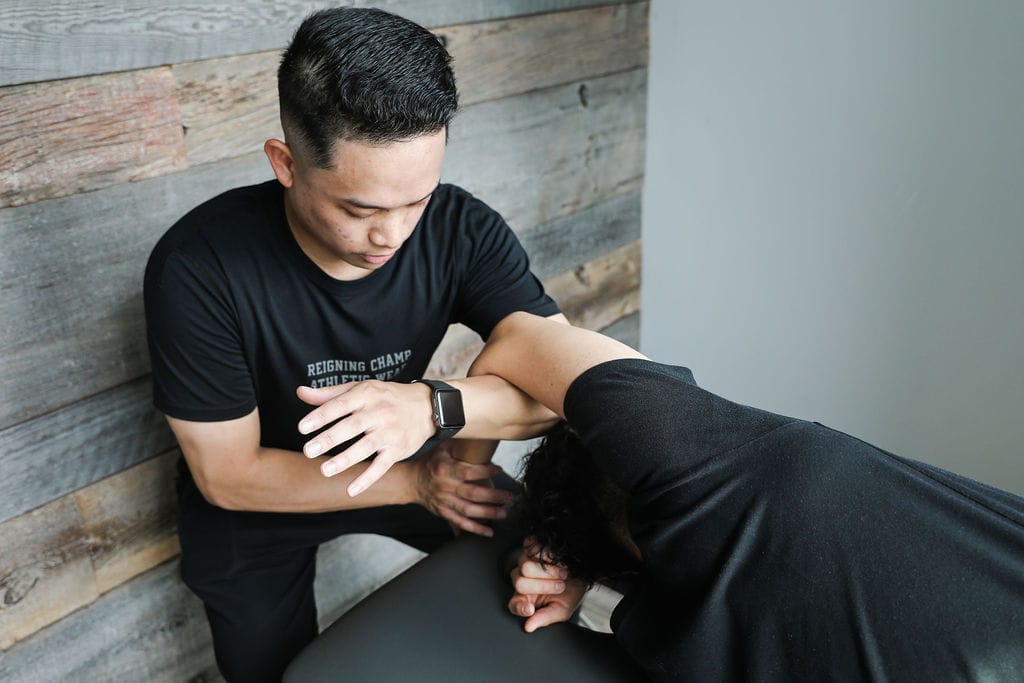
How do I book an appointment with a massage therapist near me?
Click HERE to book an appointment with a physiotherapist or chiropractor at one of our eight locations.
- Massage Therapy Etobicoke – Triangle Physiotherapy Etobicoke
- Oakville Massage Therapy Clinic – Triangle Physiotherapy Oakville
- RMT North York – Triangle Physiotherapy North York
- Mississauga Massage Therapy Clinics – Triangle Physiotherapy Mississauga
- Downtown RMT Clinics – Triangle Physiotherapy King West
- Massage Therapy Yonge and Eglinton – Triangle Physiotherapy Lawrence Park
- RMT Downtown Toronto – Triangle Physiotherapy Queens Quay
- RMT Mississauga – Triangle Physiotherapy Erin Mills
Massage therapy is a great way to relieve stress during the holiday season, reduce muscle tension, and promote relaxation. If you’re looking for professional physiotherapy services to complement your massage therapy and enhance your overall well-being, consider clinics in physiotherapy Etobicoke, Oakville, North York, Toronto, Lawrence Park, Queens Quay, Erin Mills, Mississauga, and Liberty Village. These clinics offer expert care and personalized treatment plans to support your health and relaxation needs.
While muscular pain is an inevitable part of life, some suffer from it for a long period of time and others proactively seek pain relief through massage therapy. Massage therapy is the scientific manipulation of the soft tissues of the body and it is used as a healing technique. Our skin is the largest organ of our body. While regular massage has tremendous health benefits, it is important to get it from a skilled therapist. Massage therapy has proven that it rids the body of physical discomfort and also improves a person’s mental & physical capacity without the use of prescription medication.
Some benefits of massage therapy are:
- Improved Joint mobility
- Reduced pain
- Enhanced blood circulation
- Reduced stress
- Reduced muscle tension
- Immediate health benefits
- Reduced intensity of headaches
- Relief from Insomnia
Also read, Best Physiotherapy Treatment in Oakville
Massage therapy is not just for the skin and muscles, it can also help to reduce high blood pressure, lower chances of depression and relieve headaches.
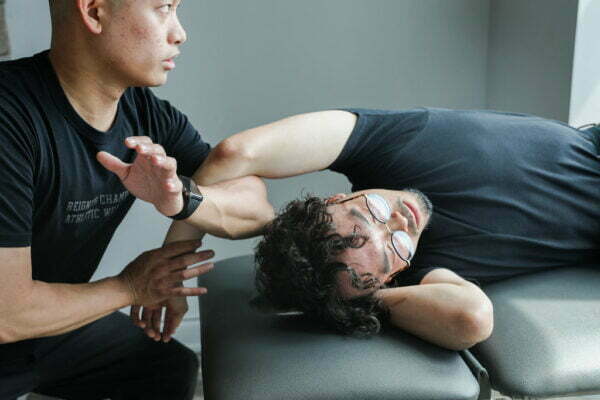
Various Types of Massage:
- Swedish massage (Relaxation, stress relief)
- Foot massage (Improves circulation, reduction of trigger points)
- Hand massage (Enhanced circulation, reduction of your trigger points)
- Deep tissue massage (repetitive strain, postural problems, recovery from injury)
- Sports massage (Preventing and treating injury and enhancing athletic performance)
Also read, Physiotherapists in Mississauga
Stress is one of the most significant factors that impact psychological and physical health. Massage therapy can be used to treat both acute and chronic conditions.
Causes: According to the American Massage Therapy Association (AMTA) Consumer survey, 72% of individuals surveyed claim their primary reason for receiving a massage in the previous 12 months was for medical reasons (43%) or stress-related (29%).
A growing body of research supports the health benefits of massage therapy for conditions such as stress, low-back pain, and more.
Effect: There are innumerable benefits to be achieved through regular massage therapy treatments from a Registered Massage Therapist. Whether your need is to have a moment of relaxation, reduce muscle tension or attain relief from chronic pain, a therapeutic massage can enhance your overall sense of emotional and physical well-being.
Also read, Physiotherapy Etobicoke
How is it Important in today’s life?
Well, our brain and muscles need time to rest once in a while if they are expected to move, think, and be productive forever. Seek help from a Massage Therapist to find relief from your symptoms. If you take care of your body today it will be there for you tomorrow! Adding massage therapy to your healthcare/recovery plan will provide natural relief without the aid of painkillers.
Don’t continue to suffer! Book an appointment with us to improve your health.
Massage Therapy Oakville | Massage Therapy Etobicoke | Massage Therapy Mississauga | Massage Therapy North York | Massage Therapy Toronto
Massage therapy is a beneficial treatment for reducing muscle tension, alleviating stress, and promoting overall relaxation and wellness. For those seeking professional physiotherapy services to complement massage therapy, there are clinics in physiotherapy Etobicoke, Oakville, North York, Toronto, Lawrence Park, Queens Quay, Erin Mills, Mississauga, and Liberty Village. These locations offer expert care and personalized treatment plans to enhance your recovery and well-being.
It is always an inconvenience when our bodies don’t perform the way we want them to. It is especially worrisome when we don’t understand why we aren’t feeling at our best. Many times, the feeling of being “off” can be attributed to a vestibular problem. Vestibular disorders can affect a person in numerous ways, and often without any pattern. The vestibular system includes the parts of the inner ear and brain that help control balance and eye movements. It consists of five sensory organs that provide our brain with information about head position and movement.
People with vestibular disorders often experience problems with vertigo, dizziness, and visual disturbance. Although dizziness & vertigo can occur in people of any age, it is more common among older adults. The feeling of dizziness can be tough to manage and might cause someone to restrict their physical activities and social engagements in order to prevent an injury from a fall. Other typical, secondary problems that can arise from vestibular disorders are nausea/vomiting that reduced the ability to focus or concentrate and fatigue.
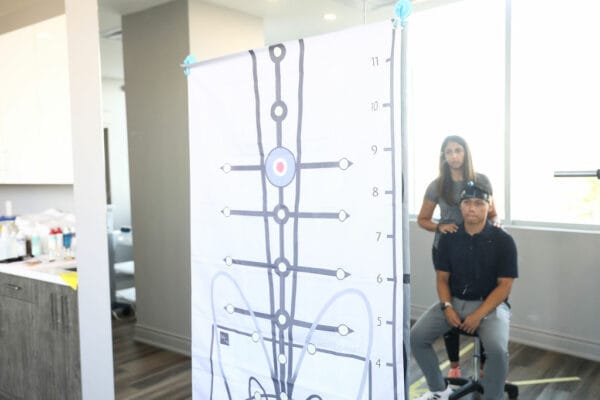
Evidence has shown that vestibular rehabilitation can be effective in improving symptoms related to many vestibular disorders. Symptoms due to vestibular disorders can reduce the quality of life and slow down all aspects of our daily routine.
Also read, Physiotherapy Clinic in Oakville
Some common symptoms are:
- Dizziness and imbalance
- Decreased in muscular strength and flexibility
- Increased joint stiffness
- Reduced on stamina
- Vision disturbance
- Hearing changes
- Psychological changes
Diagnosis and treatment are not always the only solution for vestibular disorders. It is important to understand some common, significant limitations in order to better manage them.
Also read, Physiotherapy Mississauga
Some common limitations are:
- Balance is commonly taken for granted until it is impaired
- People with vestibular disorders can suffer cognitive impacts, such as poor concentration, memory, and word recall
- People also restrict their movement and activity levels to avoid pain
It is important to note that most of these symptoms can also be caused by other conditions and should be discussed with a healthcare professional or a skilled physiotherapist. At Triangle Physiotherapy, with the help of our skilled team of physiotherapists, your vestibular issues can become a thing of the past!
Vestibular rehabilitation is crucial for managing vertigo and improving balance through targeted exercises and therapy. If you are in need of professional physiotherapy services for vestibular rehabilitation, consider clinics in physiotherapy Etobicoke, Oakville, North York, Toronto, Lawrence Park, Queens Quay, Erin Mills, Mississauga, and Liberty Village. These clinics offer expert care and personalized treatment plans to help you regain stability and enhance your quality of life.

Some common winter sports injuries:
1) Separated shoulders
2) Knee Sprains
3) Torn ligaments
4) Pulled muscles
5) Fractures
Also read, Etobicoke Physiotherapy Clinic
Exercising alone isn’t enough to achieve good health if you’ve already had an injury. It’s important to address injuries before they worsen and become more difficult to manage. At Triangle Physiotherapy, we promote active treatment programs that emphasize exercise to encourage client participation & independence.
Overcoming winter aches and pains:
Sometimes, a change in the weather could cause dormant aches to become more apparent. Joint pain can occur anytime throughout the year, but in the cold and wet months of the winter, you may find it harder to cope with.
A visit to a physiotherapist can help to keep you moving forward in a pain-free manner.
- Avoid excess twisting and forward bending. Bend the knees and keep the back as straight as possible when you are lifting.
- Make sure that you are using proper techniques and good body mechanics to help you avoid shoulder and low back injuries can be avoided.
- Don’t let the cold weather put you off – bundle up and be careful in wet or icy conditions.
- Exercising regularly will help reduce pain within your joints and help prevent other health issues.
- Also, ensure that you don’t overdo exercise if you are new in the sphere. Make sure you warm up with a brisk walk or gentle jogging.
Also read, Physiotherapy Treatment in Oakville
When our body is cold, it restricts the amount of blood it sends to our extremities, like our hands and feet, so that it can focus on supplying vital organs (like the heart and lungs) with blood. This means that we lose less heat from blood circulating near the surface of the skin, and also means that the joints get less blood. This can cause delayed healing and an increased insensitivity to pain.
To answer all of your queries in detail, we, at Triangle Physiotherapy thoroughly assess you and create customized treatment programs that address each individual’s needs. There are many people who feel depressed during the winter months, which can increase their sensitivity to pain. Don’t let your passion for living a pain-free life take a back seat during the winter season!
Triangle Physiotherapy is coming up with a new health campaign called #JoinTheMovement. By participating in this movement, you will notice a significant difference in your overall health awareness and awareness of what a Physiotherapist can do for you.
So, what are you waiting for? For more information on our services, visit our pages on facebook, and instagram
Winter can increase the risk of slips and falls, making physiotherapy essential for recovery and injury prevention. If you are looking for expert physiotherapy services, there are reputable clinics in physiotherapy Etobicoke, Oakville, North York, Toronto, Lawrence Park, Queens Quay, Erin Mills, Mississauga, and Liberty Village. These clinics provide specialized care and tailored treatment plans to help you stay safe and active throughout the winter season.
What do we mean by Sports Injuries? Any sort of injury that is caused when we get too involved and carried away in the spirit of any sport. When the passion is high, and the energy is there we tend to suffer from small accidents related to Knee pain, Elbow, etc.
What qualifies as a Sports Injury?
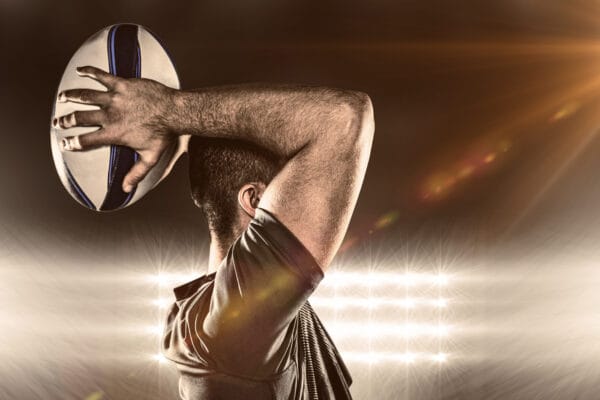
It’s any type of injury that might arise from getting too involved and carried away in the spirit of any sport. In the heat of the moment during a sports game, it is easy to ignore smaller annoyances that might progress to become significant sources of pain.
Also read, Physiotherapy Oakville
So, what do many people do when they inevitably suffer a sports injury?
The most common answer is to go and visit a doctor. However, we tend to forget that the most effective and immediate assistance we can get is from a physiotherapist. Reducing swelling and providing pain relief are usually the first steps that a physiotherapist will take to promote recovery after an injury.
Advanced progression of the treatment plan usually involves techniques like stretching and providing range of motion and strengthening exercises that are meant to help the injured person regain strength and balance. The physiotherapist will also ensure that you don’t push yourself too far or too fast, thereby helping you prevent re-injury.
Below are some common questions and answers that might be relevant to you:
Who is better equipped to diagnose my injury – a doctor or a physiotherapist?
Both doctors and physiotherapists have the necessary skills to diagnose your injury. Interestingly the most important thing is that there is a DIAGNOSIS made!
Who is better equipped to manage/treat my injury – a doctor or a physiotherapist?
Well, it depends on the injury. For example, it is not uncommon for a physiotherapist to refer a patient to a doctor to ask for a prescription for some anti-inflammatory medication as these are not able to be prescribed by a physiotherapist. However, a physiotherapist will generally provide more detail regarding the injury, as well as provide manual treatment and prescribe a detailed exercise program for the patient that will help promote recovery.
Also read, Physiotherapy Clinic Mississauga
When do I need to consult a physiotherapist?
There are many other conditions apart from sports injuries that would require treatment from a physiotherapist. Some of them are:
- Any arthritic conditions
- Treatment of pelvic floor disorders
- Chronic/Overuse injuries
- Muscle or joint issues that might arise during pregnancy
- Vestibular conditions
- Various other muscle strains and sprains
Any of the above-mentioned problems should be treated immediately in order to prevent further aggravation of the condition! Seek the help of our specialists at any of our locations in Etobicoke, Oakville, North York, Mississauga & Toronto, and get rid of such dilemmas!
Who is a Podiatrist? A podiatrist deals with the assessment, diagnosis and treatment of the lower limbs and feet. What is a Chiropodist? A chiropodist deals with the assessment, diagnosis and treatment of the lower limbs and feet. Sound familiar? That is because these two professions are one and the same!
While there may be differences in terms of scope of practice in other areas of the world, in Canada, both podiatrists and chiropodists are qualified to treat patients with arthritis, diabetes, lower limb sports injuries, and various other ailments of the feet. They have received specialized training which allows them to work with patients of all ages and to help the elderly stay mobile and independent. The only practical difference between the two professions, in terms of their scope of practice in Canada, is simply their title.
Also read, Physiotherapy Treatment Etobicoke
Chiropodists can advise patients on how to look after their feet and what type of shoes or orthotics to wear. They can also treat, alleviate and benefit day-to-day foot conditions, such as:
- Thickened, fungal, or ingrown toenails
- Varicose veins
- Athlete’s foot
- Smelly feet
- Dry and cracked heels
- Flat feet
- Bunions
- Heel pain
- Ageing feet
- Blisters
- Gout
- Sports Injuries
Also read, Oakville Physiotherapy Rehab Clinic
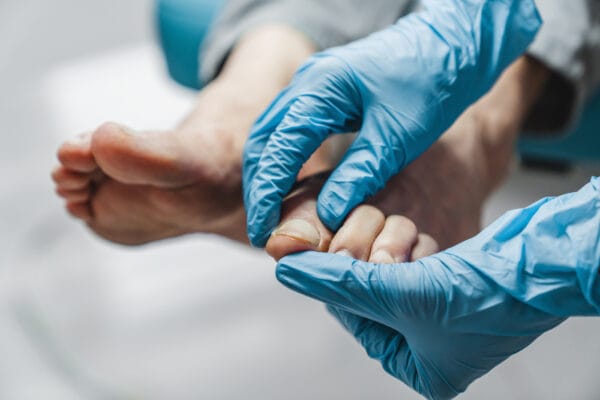
Seek help from a Chiropodist for advice or treatment if you have:
- Painful heels or arches
- Thickened or discoloured toenails
- Cracks, cuts, or hardened skin on your feet
- Growths, such as warts
- Scaling or peeling on the soles
- Any other foot condition
Don’t bury your head in the sand and ignore small foot problems! These small “problems” can quickly transform into major issues that can affect the quality of your life. As they say, “Prevention is the best cure“. Patients who make regular check-up appointments can avoid many potential foot problems as Chiropodists are specialists at recognizing problems before they have occurred.
Don’t let your feet problems keep you from stepping into our clinic! Seek the help of our foot specialists at any of our locations in Etobicoke, Oakville, North York, Mississauga & Toronto, and say goodbye to your foot dilemmas!
Addressing foot problems effectively often requires a comprehensive approach that includes professional physiotherapy. If you need expert care for foot-related issues, there are clinics in physiotherapy Etobicoke, Oakville, North York, Toronto, Lawrence Park, Queens Quay, Erin Mills, Mississauga, and Liberty Village. These locations provide specialized physiotherapy services and personalized treatment plans to help you get back on your feet and improve your overall mobility.
Are your worries all perched on a pillow? And we don’t mean figuratively, but literally, are your worries all about THE PILLOW? Well, you are not in as uncommon a dilemma as you may think. Physiotherapists frequently get queries about pillow-related problems.
Sleeping on the wrong pillow, or one that is too worn out, not only leads to headaches, backaches, and neck cramps but also prevents you from getting a good night’s sleep. Lack of proper sleep can lead to many serious health issues, like obesity, heart disease, diabetes, etc.
It is imperative that you choose the right pillow for yourself but the kind of pillow you should pick will depend on your own unique needs as well. A physiotherapist is the best person to tell you exactly what you need. However, here are a few things that you can keep in mind while making a choice –
- Your usual sleeping position
- The shape and size of your head, neck and back
- Desired softness/firmness of the pillow
- Any neck pain, or backache you may have
- And your budget

Also read, Physiotherapy Clinic in Mississauga
There are a plethora of pillows in the market – cotton, polyester, feather, down, memory foam etc. However, these don’t cater to specific support or pain needs. If you have been injured, or have a particular condition, you will need a pillow that caters best to not just your problem, but also the stage that you are in. There are three main stages –
- Accommodation
- Correction
- Maintenance
For each of these three stages, you will need a specific kind of pillow.
Accommodation Stage:
Specialty pillows that are designed for the ‘Accommodation’ stage, are pillows that bring in comfort and ease by providing support and stabilizing the existing ailment or disorder. Such pillows are often called Displacement pillows and are often recommended by physiotherapists for short-term pain relief after an injury.
Correction Stage:
The next stage of an issue or injury is ‘Correction’. At this stage, a doctor or physiotherapist attempts to find a remedy for the cause of the problem, and thereby correct it. Pillows recommended in this stage are often designed to provide support, and sometimes to even change the sleeping position of the injured or ailing person. There are various ‘Supportive’ pillows to meet different support levels, firmness and neck lobe size needs of different patients. There are also specialized ‘Corrective’ pillows, which can reduce headaches, neck pain, joint pain, and whiplash discomfort and can even improve nerve function. A physiotherapist can tell you what is the ideal Supportive or Corrective pillow you need, based on your health and body needs.
Also read, Physiotherapy Clinic Oakville
Maintenance Stage:
Pillows for the last stage, ‘Maintenance’, help to promote good health by returning and keeping the body in its natural alignment. At this stage maintaining the normal curvature of the neck and spine is of utmost importance. While the normal curvature of one person’s neck and spine may differ from another, there are some general guidelines that a physiotherapist can jot down to help you understand your needs better. Comfort and support are the most important of these.
There are also Aqua pillows, which perform all the 3 functions of a pillow:
- Accommodation: Since water is fluid, a person gets customized accommodation that happens in real time, as the individual changes their position on the pillow.
- Correction: The volume of water determines the firmness and density of the pillow, which means different amounts of water can be utilized to help correct the neck position of different people in different stages of healing.
- Maintenance: Since the volume of water remains constant until changed manually, it helps maintain the neck posture at all times while sleeping.
A lot of people buy a pillow, try it for a few nights, and then feel it isn’t right for them. Sometimes the pillows can be returned, but more often, people end up having a collection of pillows that they have hardly ever used. An Aqua pillow is a huge savior in this aspect, as it can be customized for each individual! The water levels can be modified to best suit the clinical condition, neck shape, and size, and preferred sleeping position of the buyer.
There are also specially designed Orthopaedic pillows for specific conditions like arthritis, fractures, and slip discs. A physiotherapist can enlighten you more about these.
Seek the help of our professionals at any of our locations in Etobicoke, Oakville, North York, Mississauga & Downtown Toronto, and say goodbye to your pillow problems!
Proper posture and support are essential for preventing discomfort and maintaining spinal health. For those seeking professional physiotherapy services to address posture-related issues, consider visiting clinics in physiotherapy Etobicoke, Oakville, North York, Toronto, Lawrence Park, Queens Quay, Erin Mills, Mississauga, and Liberty Village. These clinics offer expert care and tailored treatment plans to help you improve your posture and overall well-being.
Who doesn’t want to stay flexible, especially as they age? Well, stretching is one very good way to stay flexible! According to the American College of Sports Medicine, it’s good to stretch all the major muscle groups at least two times a week. Stretching is an integral part of physiotherapy, and a physiotherapist is the perfect person to guide you on how to stretch. Physiotherapists recommend stretching regularly, as it keeps one’s hips and hamstrings flexible later in life, which is very important for easy movement in old age.
Apart from this stretching has many other benefits:
- It increases muscle flexibility
- It improves posture
- It also improves performance in sports & other activities
- It provides relief from stress
- It helps prevent injuries
- It prevents Delayed Onset Muscle Soreness or DOMS, which is the soreness and pain one suffers a few hours to a few days after hectic exercise.
Also read, Physiotherapy Etobicoke
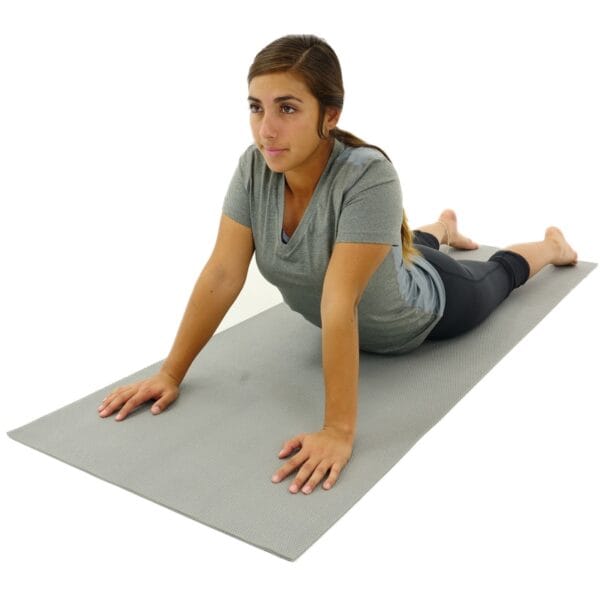
The first question that many wonder about, is what body parts should one stretch.
In physiotherapy, stretching the following body parts is considered essential –
- Neck
- Jaw
- Upper Back
- Shoulders
- Triceps
- Biceps
- Wrists
- Quadriceps
- Calves
- Hamstrings
- Hips
- Groin
The next thing to take into consideration is if there is the right amount of time to stretch. While there is no particular amount of time that physiotherapists suggest you stretch, recent studies show that 3 sets of 30-second stretches, 5 days per week for 4 weeks help to strengthen hamstring muscles greatly.
Also read, Physiotherapy Treatment Oakville
There are many kinds of Stretching that physiotherapists recommend.
Stretching a muscle to its full extent and holding it for 15 to 30 is known as the Static Stretch. You can exceed this time frame a bit but don’t stretch until it hurts, as you can end up doing more damage to your muscles than good by over stretching. However, don’t do Static Stretches before a run or sprint, as this can slow down your speed by tiring out the muscles.
Before warming up for a run or other sports, doing Dynamic Stretches is more suitable. Dynamic Stretches are stretches that you do, as you are moving, and hence are called dynamic.
Another effective way of stretching, often used in physiotherapy, is Proprioceptive Neuromuscular Facilitation (PNF) Stretching.
PNF stretching is an advanced type of stretching wherein the targeted muscle or muscle group, is stretched, contracted, and finally relaxed. This process is repeated at least 2 to 4 times before moving on to the next muscle group. PNF stretching helps to elongate one’s muscles and was first developed as a muscle therapy by athletes, but is now often used in physiotherapy as a means of increasing flexibility.
Stretching can be used as a preventative precaution, but also to help correct and recover from more serious issues. A physiotherapist can guide you more regarding the stretching exercises that will be best suited to your needs. So visit any of our locations in Etobicoke, Oakville, North York, Mississauga & Toronto, and find out how you can get the most out of stretching!
Stretching with physiotherapy can help improve flexibility, prevent injuries, and enhance overall physical performance. If you’re looking for professional physiotherapy services to guide you in safe and effective stretching techniques, there are clinics in physiotherapy Etobicoke, Oakville, North York, Toronto, Lawrence Park, Queens Quay, Erin Mills, Mississauga, and Liberty Village. These clinics provide expert care and personalized treatment plans to help you achieve your mobility and wellness goals.
Massage therapy has a positive effect on a plethora of medical conditions. It rejuvenates both your mind and muscles. Everyone experiences pain, the only difference is some continue to suffer and some proactively seek pain relief through massage therapy. Our skin is the largest organ in our body. The skin interfaces with the environment and is the first line of defense from external factors. Taking good care of your skin through massage therapy will help keep your skin healthy and muscles rejuvenated. Massage therapy is regarded as one of the oldest healthcare professions. Massage therapy is not just for the skin and muscles, it can also help to reduce high blood pressure, lower chances of depression and relieve headaches.
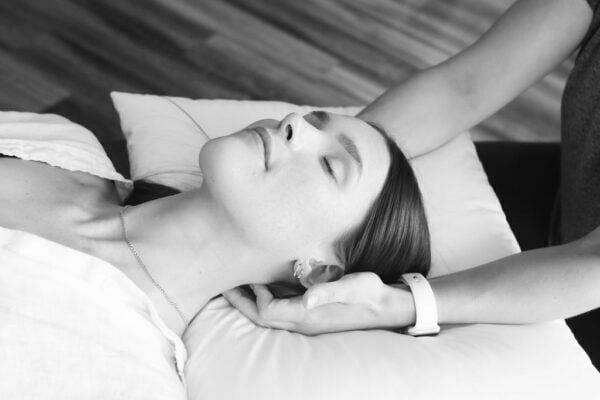
Also read, Physiotherapy Etobicoke
Healing from a car accident injury through massage therapy
Car accidents can cause a variety of physical problems, and many people seek physiotherapy and/or massage therapy for relief from whiplash and other aches and pains. Massage therapy has the potential for facilitating health, wellness, and injury recovery from car accidents.
Massage therapy can relieve Whiplash
Whiplash injuries are common in car and sports accidents. People who get whiplash may experience pain, stiffness, and poor range of motion, among other symptoms. Some people may feel mental or emotional symptoms such as loss of memory or focus, insomnia, and depression. If you have whiplash, ask your physician about adding massage to your physical therapy regimen, as the combination could help speed up your recovery.
- Massage Therapy for Knee Injuries
People in car accidents often injure their knees (though not as often as heads, necks, and spines). Statistics show car crash victims often injure their Anterior Cruciate Ligaments (ACLs), as do many athletes. Massage therapy has been shown to provide pain relief and healing for people with a wide variety of knee problems.
Also read, Physiotherapy Clinic in Oakville
- Massage therapy helps to recover from Immediate emotional trauma
If you’re in a car crash, you may suffer emotionally even if you do not sustain any physical injuries. Massage therapy, especially within several hours of an auto accident, can help people recover their emotional balance.
We all suffer from adverse health effects both psychological and physical, and stress is one of the important factors to look after. A massage can help reduce everyday stress by helping muscles to relieve and relax through the pressure points manually worked on by one of our experienced massage therapists.
Our registered massage therapists at Triangle Physiotherapy are happy to assist you with any questions pertaining to your health goals and guide you on the road to recovery. Adding massage therapy to your healthcare/recovery plan will provide natural relief without the aid of painkillers. Living pain-free naturally is our goal, and at Triangle Physiotherapy, we will guide you every step of the way.
Massage therapy is a great way to relax, reduce muscle tension, and promote overall well-being. For those looking to combine massage therapy with physiotherapy services, there are clinics in physiotherapy Etobicoke, Oakville, North York, Toronto, Lawrence Park, Queens Quay, Erin Mills, Mississauga, and Liberty Village. These locations provide expert care and personalized treatment plans to help you achieve optimal health and relaxation.

